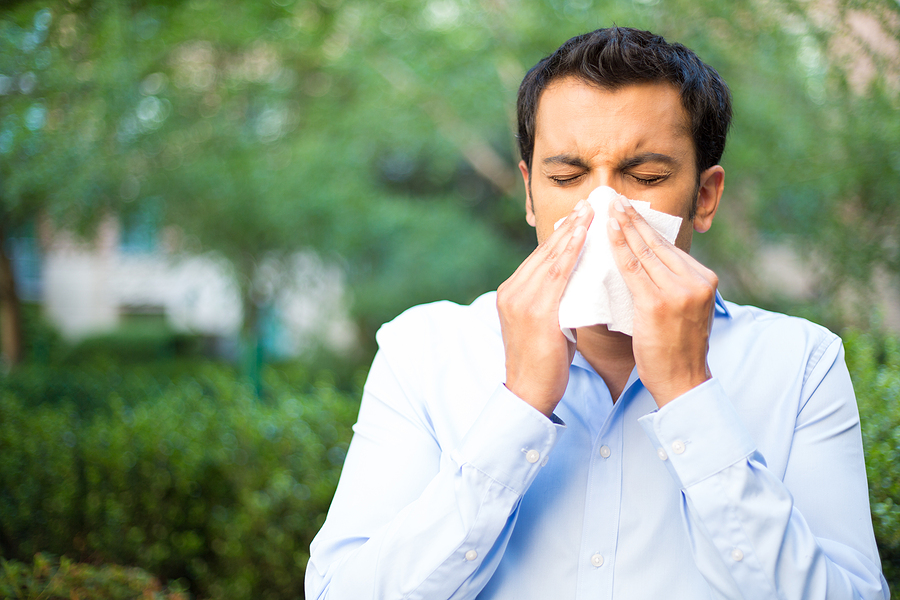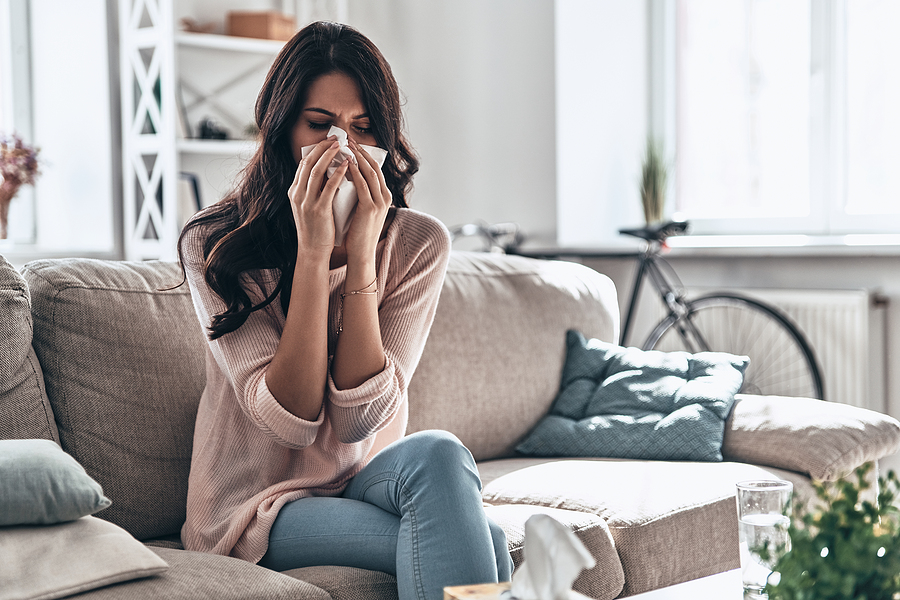Indoor Allergies: How to Create an Allergy-Friendly Home Environment
Posted By:SSG Admin Posted On:17-Sep-2024
As many as 33% of U.S. adults and 25% of children experience seasonal allergies, food allergies, or eczema. That’s more than 100 million people. In a perfect world, you could stay inside and avoid allergies, but that’s not always the case. Some people have perennial allergic rhinitis, which is a situation where allergies don’t go away and are triggered by allergens inside the home.
Three common allergens pose the biggest issues within a home. They are dust mites, pet dander, and mold. Cockroaches can also trigger indoor allergies in some people. Those are the common problems, but how do you fix them? Our tips help you create an allergy-free home environment.
Control the Humidity
Ideally, the humidity in your home should be between 30% and 50%. It can be hard to get it that low, so you might want to aim for 30% to 60%. When a home is too moist, it increases the risk of mold and mildew. It also helps dust mites as they prefer humidity. A drier home is less likely to encourage dust mites to thrive.
If you have an AC system, make sure it’s removing humidity while it cools your home. If you don’t, invest in a dehumidifier to run in more humid areas of your home. Basements and bathrooms are two of the best places for a dehumidifier. If you can’t run a drain line to the outside of your home, make sure you empty the dehumidifier’s tank every day or more often if it fills quicker than once a day.
Cover Your Mattress
When possible, cover your mattress in a washable cover. Dust mites are not going to go away completely, but you can keep their numbers down by using a washable mattress cover. Wash it at least once a month if you have dust mite allergies.
A couple of times a year spread baking soda on your mattress. Let it sit for a few minutes before vacuuming. Baking soda absorbs odors and moisture, which is a good way to get rid of dust mites.
Invest in Quality Air Purifiers
Your bedroom and main living area need a quality air purifier. Read the guide to see how large a space it is designed to clean and how often. If your family room is 300 square feet, a machine rated for 200 to 250 square feet isn’t powerful enough.
Check the “Clean Air Delivery Rate” or CADR. It is a rating of how much clean air is produced each minute at the highest fan setting. If the rating is 150, it means 150 cubic feet of air is cleaned every minute. A higher CADR is better.
Air purifiers also come in different types. An activated carbon filter has to be removed and replaced once or twice a year. The filters can get costly. Mechanical filters push air through fibers in a HEPA filter. They do a great job at capturing pollen and other allergens, but the filters can be expensive.
Finally, look for an Energy Star model. Air purifiers need to run 24/7 to be effective. You want a unit that won’t drive up your electricity bill while cleaning your air.
Keep Pets Washed and Brushed
If you have pets, brush them daily and make sure their coat is clean. If they hate baths, use a dry shampoo and brush your pet thoroughly after rubbing the foaming shampoo in.
Let the Sun In
In addition to a dehumidifier, open the blinds as much as you can. Sun will help dry up moisture and ease high humidity levels. Just make sure that the blinds you’ve opened aren’t heating up your room unnecessarily and making your AC system work harder.
Limit Houseplants
Houseplants are a fun hobby and they look great, but the potting soil can increase mold spores. If you need to have some plants, limit the number you decide to own. Place them in rooms where mold is less likely to grow. Don’t have plants in a humid bathroom without ensuring you have a way to remove humidity.
Remove Drapes and Carpeting
Dust mites look for items with a lot of fibers and padding. Carpets, overstuffed furniture, and heavy drapes are ideal homes for dust mites. Stick to materials and furnishings that are easier to clean. Instead of having a fabric sofa, invest in leather. Get rid of carpeting and replace it with bamboo or another type of wood flooring.
Drapes are hard to wash. If you have to have them, be prepared to have them dry-cleaned every six months or so. Consider replacing heavy drapes with bamboo blinds or curtains that are machine washable.
Thoroughly Clean Your Home
Once a week, do a deep clean of your home. Dust surfaces, mop flooring, vacuum carpets and rugs if you have them, and sanitize counters, sinks, tubs, and toilets. The goal is to keep dust, mold, and mildew to a minimum.
When you’re cleaning, open a window if possible. If pollen or smoke counts are high, you won’t be able to air out your home. On a cooler day in the fall or winter, take advantage of the cooler temperatures. Throw open your windows and let fresh air in.
Wash Bedding Often
You should also wash your comforter every couple of months. If you have a duvet and duvet cover, wash the cover when you do your sheets, and wash the duvet once or twice a year.
If you have pets that sleep with you, this may not be often enough. Use your judgment. If your comforter smells of pets, it’s overdue for cleaning.
Pillows need to be washed every four to six months, depending on how hot and sweaty you get when you’re sleeping. Replace them every couple of years or more often if they’re stained with drool and sweat and the stains don’t come out.
When you wash, use something that helps kill germs and microscopic insects without harsh chemicals. Use distilled white vinegar instead of fabric softener.
Consider Conquering Your Symptoms for Good
You should do as much as you can to improve indoor air quality and control allergens within your home. However, there are other ways to beat your allergies.
Premium Allergy & Respiratory Center has several options for personalized allergy treatments. Common indoor allergies are a drag, but you can have immunotherapy that offers long-lasting relief after completing the treatment.
Subcutaneous (SCIT) and intratympanic immunotherapy are shots given over time. SCIT treatments require weekly injections for several years while intratympanic treatments require only three injections into the lymph nodes. If you hate needles, there are also sublingual (SLIT) treatments. With this, you place a drop or dissolving tablet under your tongue.
The goal with any of them is to introduce small amounts of the allergen to your body. It allows your body to adjust to the allergen and stop triggering histamines that cause the symptoms you feel. It’s an effective way to end your allergies for good. Call or message Premium Allergy & Respiratory Center to learn more.





